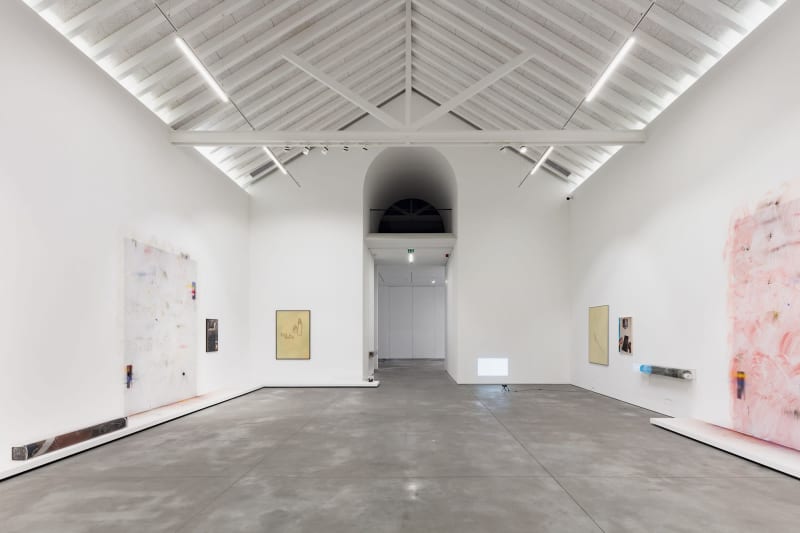Gaze Dithering: David Maljković
In talking about his artistic approach, David Maljković often refers to a mutation of the works: to works feeding upon themselves in order to emerge anew. Gaze Dithering at Galeria Francisco Fino resumes this practice of using previous works as raw material and continues the artist’s reflection on how this methodology is contigent to the dissolution of hierarchies between particular works and specific media. In its exploration of the procedures of constructing an image, as well as the procedures of choreographing and mediating the exhibition experience, Maljković’s work often resorts to installations constructed through an intricate process of superimposing, transforming and reinterpreting works from different periods of his practice.
Gaze Dithering attempts to allow multiple readings of Maljković’s work, while deliberately moving away from descriptiveness, presenting his practice as it evolves and transitions. There is a seriality to the works occupying the two rooms of the gallery, but also a seriality of gesture, which point to key interests and methods – a formal and conceptual concern with the complexities of time; a collagist approach; self-referentiality; the use of earlier works and exhibition displays as material; an inquiry into the relationship between art’s autonomy and its formal developments; and an investment in exploring the nature of the gaze.
Taking the scale of the gallery’s space, three wallpapers are turned into wall-paintings through the strong painterly gesture employed over a surface and display changing what was supposed to be a simple procedure of pasting to the wall. The surface image, blurred and straightforward in its simplicity resembles a testing-screenshot and highlights the performative gesture. The combination of pigments and glue overflows the boundaries of the wallpapers and spills on the plinths, evoking the transiency and fragility of this site-specific works.
In Alterity Line, a series of recent works, paintings and photography are mounted on aluminum and engraved upon with motives from an older series of drawings. The immediacy of drawing destabilizes the painterly medium, thus the autonomous character of both works is negated in the hybrid objects presented. The series of looped animations, bearing the same title, is formally based on the transformation of a selection of these earlier drawings and is infused with flickering color, becoming a poetic moderator and hidden key to the exhibition.
Another series of works, Yet to be titled, is created through the placing of rolled-up works within sealed plexiglas boxes whose format is directly borrowed from the inkjet printer cartridge. The form of the artless technical tool is incorporated into the work, becoming at the same time a bright display-case and a space of questioning and enclosure. In one of the works from this series, a cardboard packaging, presumably for transporting a work, becomes the artwork itself, bringing together the daily processes and backstage operations of the artist’s studio and exhibition-making and including these in the experience of the show. Here, the artist’s method becomes exhibition’s content, and display is structured around a tension between an intimate approach – which attempts to convey an immediacy of the artistic process and an absence of intermediary between content and execution – and a precisely structured dramaturgy of the exhibition.
In this exhibition, Maljković’s ambiguous, open relationship to the finished work poses a challenge to discourses of development and novelty, examining instead the potentialities of otherness, variance and inconsistency as driving principles.



